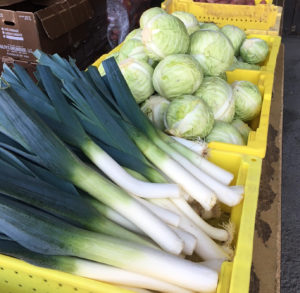The Orcas Island Food Bank Board felt the following article outlining the significance of Food Banks on their local economy would be of interest to our community. It was published in the summer issue for Window Magazine, a publication of Western Washington University and written by the editor, Mary Gallagher.
 Food banks make a huge difference in the household budgets of families in need, but it turns out they’re also an economic engine for their communities, too.
Food banks make a huge difference in the household budgets of families in need, but it turns out they’re also an economic engine for their communities, too.
Western’s Center for Economic and Business Research in the College of Business and Economics recently found substantial economic ripple effects generated by two Skagit County food banks.
Help from the food bank means families have to spend less on food, of course, which means they can spend more on other needs, such as rent, utilities, transportation, clothing and health care. That money is often spent in the community. Using Skagit County consumer spending patterns, the researchers estimate that the food distributions by Helping Hands in Sedro-Woolley and Neighbors in Need in Mount Vernon generated between $1.3 million and $3 million annually in the Skagit County economy.
For example, Neighbors in Need serves 667 households per week. If those families spent 70 percent of the value of the food on local goods and services, they’d pump more than $1.5 million into the economy.
By the same measure, Helping Hands and its 730 weekly household clients create an estimated $1.4 million in new local spending.
The researchers found that food banks also generate local jobs: together, the two food banks support anywhere from 12 to 51 jobs thanks to the additional funds that families can spend in their communities.
James McCafferty, co-director of the Center for Economic and Business Research, said not much research has been done on the regional economic effects of food banks. He recently presented the study to a conference of food bank directors: “I bet none of you came in here thinking you’re job creators,” he told them.
According to the U.S. Department of Agriculture, more than 12 percent of U.S. households are “food insecure,” which means their diet consists of low-quality or low-variety foods—or that they don’t have enough food and sometimes go hungry.
Food banks’ economic power lies in their bulk food purchases at 4 to 10 cents a pound. That means individuals—not to mention government and non-profit agencies—who financially support food banks are actually engaging in a relatively low-cost way to support regional job growth, the researchers said.
“I hope communities and political agencies will end up taking a look at food banks in a different light,” McCafferty says. “They are becoming increasingly important to their communities’ economies.”
The researchers, including several students, used an economic modeling system called IMPLAN to estimate the impact of the food banks on employment, income and other macroeconomic factors. The results are specific to Skagit County and don’t necessarily translate to other regions.
The center conducts economic research for a variety of public and private organizations and is preparing a similar study for Whatcom County food banks.
The data also show that food banks are linked to lower crime figures in their areas. And if food banks help families make rent or car payments, their housing and employment are more stable. Another unmeasured impact: When grocery stores sell their nearly expired food to food banks, less goes to landfills.
“There’s all sorts of ripples and levers and multipliers,” says Hart Hodges, co-director of the Center for Economic and Business Research. “Literally tons of food that was going to go to a landfill, instead goes to allowing more spending in a community. That’s a heck of a switch.”
**If you are reading theOrcasonian for free, thank your fellow islanders. If you would like to support theOrcasonian CLICK HERE to set your modestly-priced, voluntary subscription. Otherwise, no worries; we’re happy to share with you.**








Great article and a good reminder to be grateful for what we have – our food bank is the best of any, I’m convinced. We are so fortunate and to have our food bank, and all the wonderful volunteers, farmers, food donors, and people who cook and prepare lunches for us (on Tuesdays).
Special thanks to the Community Church and to all the people past and present who, twice a week, greet us with smiles and helping hands. They feed us, clean up after us, and give to us far more than just a meal. All of you are appreciated. You make a positive difference in so many lives – and you help our food budget stretch so that many of us can make ends meet.
Also a big thank you to the Resource Center and the efforts they make to come to us at the food bank and sign us up for community programs that help low income people.